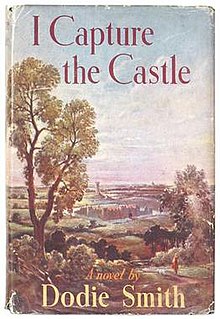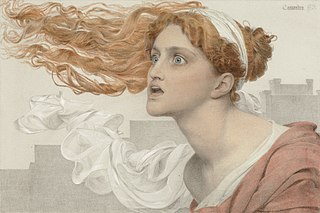Plot
The novel takes place between April and October in a single year in the 1930s. The Mortmain family is genteel, poor, and eccentric. Cassandra's father is a writer suffering from writer's block who has not published anything since his first book, Jacob Wrestling (a reference to Jacob wrestling with the angel), an innovative and "difficult" modernist novel that sold well and made his name, including in the United States. Ten years before the novel begins he took out a forty-year lease on a dilapidated but beautiful castle, hoping to find either inspiration or isolation there. Now his family is selling off the furniture to buy food.
The widowed Mortmain's second wife, Topaz, is a beautiful artist's model who enjoys communing with nature, sometimes wearing nothing but hip boots. Rose, Mortmain's elder daughter, is a classic English beauty pining away in the lonely castle, longing for a chance to meet eligible and preferably rich young men. She tells her sister Cassandra that she wants to live in a Jane Austen novel. Cassandra, the younger daughter and the first-person narrator of the novel, has literary ambitions and spends a lot of time developing her writing talent by "capturing" everything around her in her journal. Stephen, the handsome, loyal, live-in son of the Mortmain late maid, and Thomas, the youngest Mortmain child, round out the cast of household characters. Stephen, a "noble soul," is in love with Cassandra, which she finds touching but a bit awkward. Thomas, a schoolboy, is, like Cassandra, considered "tolerably bright".
Things begin to happen when the Cottons, a wealthy American family, inherit nearby Scoatney Hall and become the Mortmains' new landlords. Cassandra and Rose soon become intrigued by the unmarried brothers Simon and Neil Cotton. Neil, who was raised in California by their English father, is a carefree young man who wants to become a rancher in the United States. Simon, who grew up in New England with his mother, is scholarly and serious, and loves the English countryside. Simon is the elder brother and therefore the heir, and is already much wealthier than Neil, so, although Rose is not attracted to him, she decides to marry him if she can, declaring that she would marry the Devil himself to escape poverty.
At their first meeting the Cottons are amused and interested by the Mortmains. When they pay a call the very next day, however, the inexperienced Rose flirts openly with Simon and makes herself look ridiculous. Both brothers are repelled by this display and, as they walk away, Cassandra overhears them resolving to drop all acquaintance with the Mortmains. After an amusing episode involving a fur coat, however, all is forgiven and the two families become good friends. Rose decides that she really is taken with Simon, and Cassandra and Topaz scheme to get Simon to propose to her. Simon falls in love with Rose and proposes to her.
Rose and Topaz go to London with Mrs Cotton to purchase Rose's wedding trousseau. While everyone else is away Cassandra and Simon spend the evening together, which leads to their kissing. Cassandra becomes obsessed with Simon, but suffers feelings of guilt since he is Rose's fiancé. Cassandra concludes that she must tactfully deflect Stephen's offer of love, and encourage him in his emerging career as a model and a film actor. She joins forces with Thomas to help their father overcome his writer's block by the drastic expedient of imprisoning him in a medieval tower; copes with her own increasing attraction to Simon; and records everything in her journal.
Meanwhile, unnoticed by everyone but Stephen, Rose and Neil have been falling in love. To conceal their budding romance they pretend to hate each other. When they eventually elope Simon is left heartbroken, but Cassandra becomes hopeful. Before Simon leaves to go back to the United States, he comes to see Cassandra. In spite of her feelings for him, Cassandra deflects the conversation at a moment when she thinks he might be about to propose to her, in the belief that he is still in love with Rose. The book closes on an ambiguous note, with Cassandra reminding herself that Simon has promised to return and closing her journal for good by reasserting her love for him.















